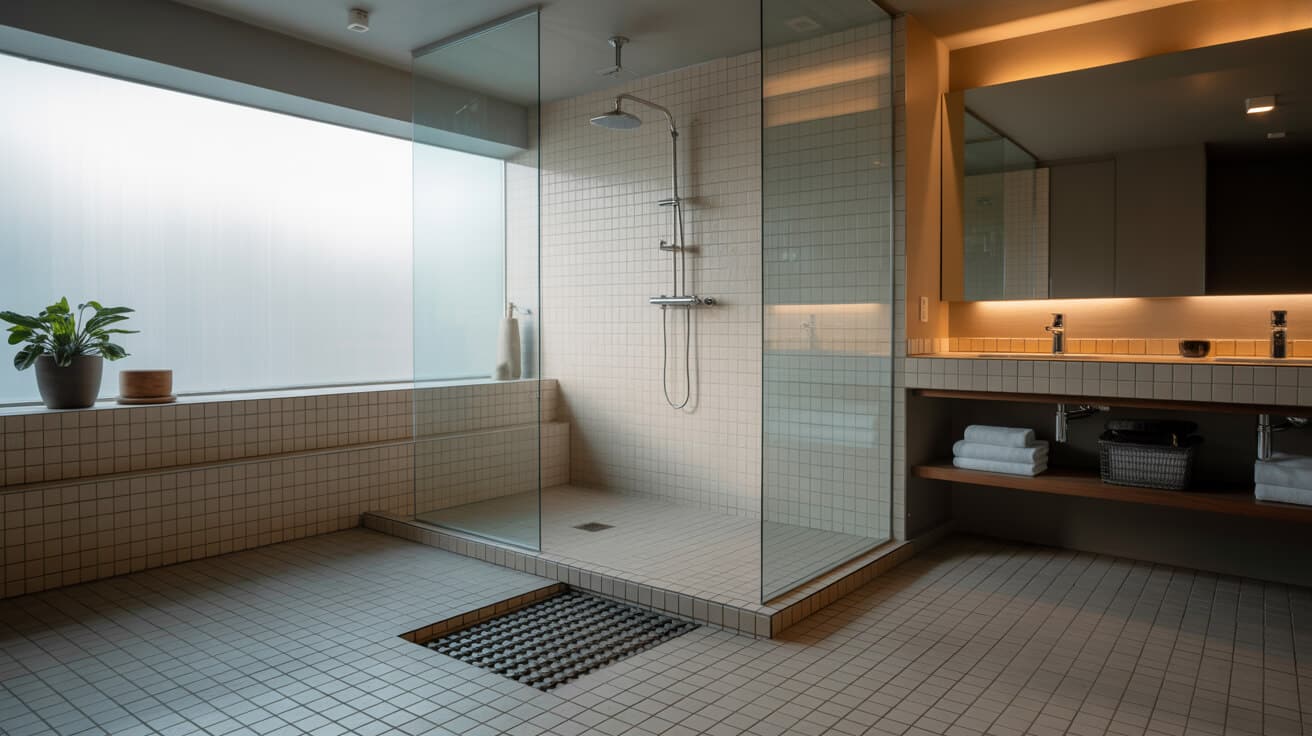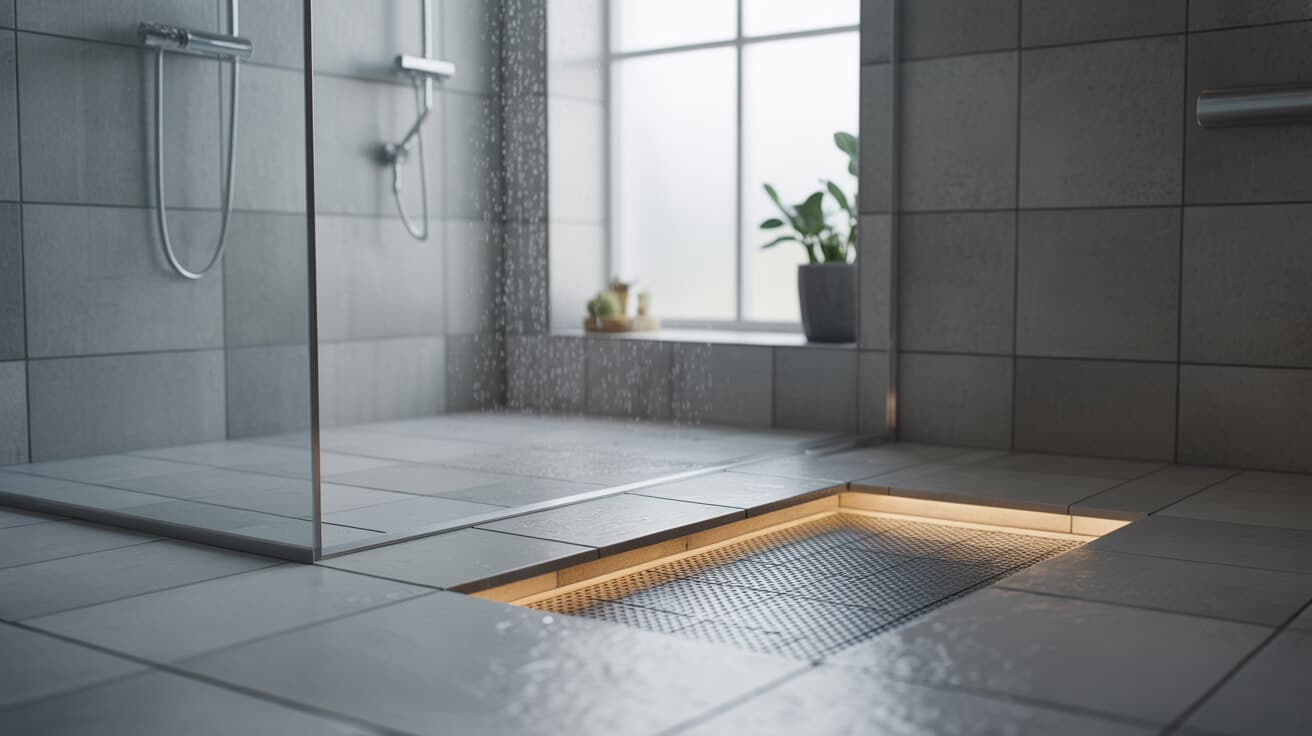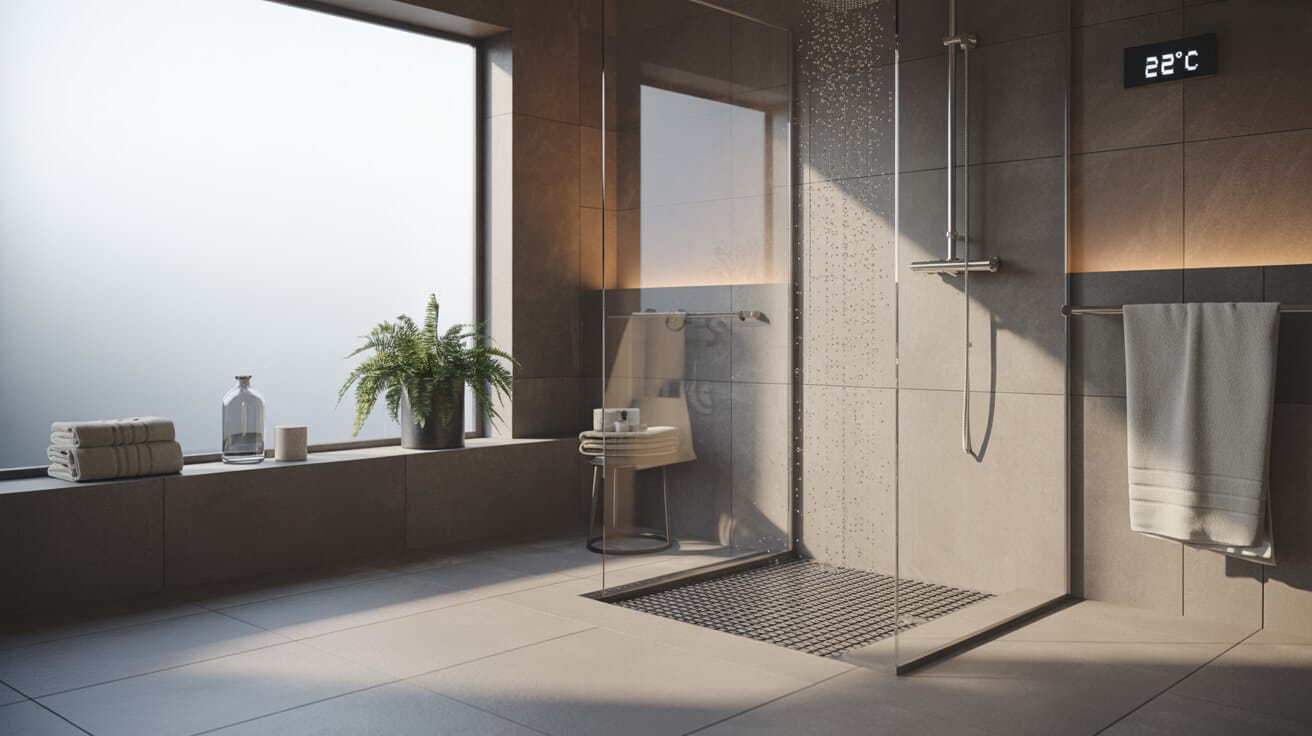Mat-based underfloor heating delivers heat through a network of electrically conductive cables affixed to a fabric or polymer mesh, designed for direct subfloor installation beneath tiles, LVT, laminate, and certain engineered wood surfaces. By transforming the entire floor into a radiant emitter, these systems bypass the localised hot spots and draught produced by conventional convector-based heating methods. Energy is distributed evenly, controlled precisely, and managed safely through modern electronic thermostats, while discreet system profiles support rapid retrofitting with minimal elevation of floor structure.
You benefit from the adaptability and predictability these solutions offer—whether you are seeking quiet, unobtrusive warmth for a bathroom update, or a modular zoning upgrade for energy-efficient property management. For professional services, such as those provided by Plumbers 4U, controlled installation and commissioning ensure ongoing warranty protection and regulatory compliance, supporting the long-term comfort and operational efficiency of your residence, portfolio, or commercial premises.
Etymology or name origin
“Mat-based underfloor heating” synthesises two key descriptors: mat-based refers to the mesh-backed arrangement of electrical heating cables, distinguishing these systems from their loose-wire or “free lay” electric counterparts, while underfloor heating situates them firmly within the family of radiant heating techniques using a floor as the primary heat-redistribution element. Industry lingo includes abbreviations such as “UFH” and “E-Mat,” with technical guides often referring interchangeably to “electric heating mats,” “mesh mats,” or “pre-spaced UFH mats.” Historically, the evolution from “cable system” to “mat-based system” follows advances in manufacturing precision, as predictable cable spacing and mesh substrates enabled wider adoption and regulatory approval. Terminology now reflects not only product structure, but also expectations regarding instal consistency, safety, and standardised performance.
Overview and context
Mat-based underfloor heating forms part of an evolving heating technology landscape, poised at the intersection of convenience, comfort, and energy stewardship. The system’s defining feature—a pre-fabricated mesh with evenly spaced cables—simplifies both design and installation, in contrast to the manual layout required in loose-wire systems or the plumbing skills needed for hydronic (water-based) UFH. The rise of mat-based approaches parallels shifts in building codes, cost structures, and user expectations for programmable comfort, especially in renovations or multi-phase property upgrades.
This technology supports a spectrum of use-cases:
- Retrofit Installations: Ideal for single-room enhancements, particularly where floor elevation must remain minimal and disruption minimised.
- Targeted Zone Heating: Common in bathrooms, kitchens, or rooms with high footfall, offering efficient supplemental heat without sacrificing wall or storage space.
- Rental and Managed Properties: Favoured by landlords and facilities managers for low-maintenance operation, tamper-resistant programmable control, and ease of post-tenancy inspection.
- Commercial Environments: Used for comfort enhancement or specialist requirements, where rapid cycle times and surface warmth are valued.
For your company or portfolio, incorporating mat-based UFH can yield not just utility savings, but also improved property valuation, broad compliance with emerging energy mandates, and a stronger perception of hospitality or employee well-being.
History
Origins of underfloor radiant systems
The principle of floor-based radiant heating traces to ancient Roman hypocausts, an innovation using hot air channels beneath stone floors to moderate indoor temperatures in public bathhouses and elite residences. Analogous methods, such as Korean ondol (heated floors via smoke channelling), laid the foundation for surface-warmed environments long before electrical or hydronic technology.
Emergence of electric mesh-mat solutions
The transition from conceptual radiant systems to practical, electrical implementations occurred in the early twentieth century, following breakthroughs in conductive alloys and safe insulation. Early iterations involved loose-lay wires or basic heating cables, requiring labour-intensive measurements to achieve uniform coverage—often leading to uneven floor warmth or operational inefficiency.
The commercial release of pre-wired heating mats during the 1990s marked a significant advance. Mesh substrates allowed for standardised spacing, reduced error risk, and faster installations, reinforcing confidence among property owners and regulatory bodies. Consumer and installer demand for reliability, speed, and predictability drove further innovation, resulting in lower failure rates and increasing system longevity.
Regulatory evolution and contemporary trends
Early adoption was constrained by limited safety standards and variations in regional building codes. As installation became more common across Europe, North America, and Asia, formal regulatory pathways—such as the UK’s Part P of the Building Regulations and 18th Edition IET Wiring Regulations—ensured safe integration into diverse dwellings and commercial sites.
In the current era, focus has expanded to controller intelligence, remote operation, advanced surface sensors, and interoperability with building energy management platforms. Advancements in insulation materials, self-regulating cables, and modular kit design have further broadened both application range and consumer acceptance.

Concept and description
Physical composition
Heating mats consist of a continuous electrical resistance cable, typically double- or single-core, manually or robotically affixed to a woven or polymer mesh. The mat is manufactured in standardised widths (usually 0.5–1.0 metres) and can be cut and adjusted in length—without damaging the cable—allowing for coverage of irregular or complex floor plans.
The following values are typical:
| Property | Common Range |
|---|---|
| Mat thickness | 3–6 mm |
| Power output | 100–200 W/m² (application-dependent) |
| Widths available | 0.5 m, 1.0 m |
| Lengths available | Modular, up to 12–20 m |
| Voltage | 230 V (standard), some low-voltage mats |
Installation layers
- Subfloor preparation: Clean, dry, and level. Moisture content checked.
- Insulation (optional but recommended): Stiff XPS, PIR, or EPS boards to reduce downward heat loss.
- Mat placement: Rolled out, cut, and adjusted to area; cable must not cross or overlap.
- Sensor placement: Floor probe installed between cable lines and fixed at centre mass of heated area for accurate temperature control.
- Electrical connection: Cold tails routed to stat location; certified electrician completes hook-up with RCD-protection and testing.
- Floor build-up: Flexible adhesive or self-levelling compound poured to encapsulate and protect the cable.
- Final flooring: Tile, LVT, engineered wood or carpet (assuming proper power and TOG rating).
Control and safety
Programmable electronic thermostats, often with touchscreen or remote app interface, maintain user-set temperatures and schedule on/off cycles. Sensor feedback regulates output, avoiding overheating. RCDs provide automatic safety shutdown if ground faults are detected, while as-installed resistance/continuity readings are documented for warranty and service tracking.
Functionality, purpose, and applications
Primary function and use cases
Mat-based underfloor heating supplies direct, ambient warmth from below, promoting even temperatures throughout the occupied zone and minimising cold spots. Unlike forced-air or radiator heating, which can stratify air and create uneven distribution, radiant floors inherently encourage stable temperature profiles, enhanced by thermal mass beneath tiles or stone.
Key deployments:
- *Residential upgrades*: Bathroom floor warming for morning comfort, kitchen heating for spill protection, or child-play room safety.
- *Commercial property*: Reception lobbies, hotel bathrooms, salons, retail fitting rooms, or office restrooms.
- *Accessibility enhancement*: Safety for elderly occupants, minimising cold/shock upon contact, simplifying surface cleaning.
Integration and energy management
Zones or rooms may be independently timed and temperature-regulated, allowing your property to optimise energy use—warming only spaces scheduled for occupancy. Multi-mat and multi-station arrays are orchestrated through smart controllers, which adapt heat-up cycles based on real-time demand and floor temperatures.
Suitability for various building types
- *Retrofitting*: The thin build-up profile (as little as 3 mm) and minimal structural requirements make mat-based systems attractive for refurbishment without significant remodelling effort.
- *New-build*: Architects specify mat-based UFH for modern flats, student housing, or luxury bathrooms.
- *Multi-unit portfolios*: Landlord and facilities managers prioritise solutions with centralised control and reliable serviceability, properties where mat-based layouts excel.
Classifications, types, and variants
| System Type | Description | Typical Use Case |
|---|---|---|
| Mesh mat | Heating cable attached to fibrous mesh | Tiles, LVT, regular rooms, most instals |
| Foil-based mats | Cable woven into metallic foil layer | Laminate/wood, floating floors |
| Loose-wire cable | Manually spaced, free-hand cable | Irregular shapes, awkward layouts |
| Single-core mats | One power tail, loop return | Small rooms, direct connection |
| Double-core mats | Live & neutral in same cable/one tail exit | Easier instal, less EMF, faster fitting |
| Self-regulating mats | Cables adjust output to surface temp | Wet areas, beyond warranty |
Comparison with alternatives
Mesh mats offer labour savings, predictable output, and easier warranty verification compared to loose-wire setups. Foil-backed systems are specified under “soft” floors where traditional adhesives are unsuitable, while carbon film solutions (mainly for floating laminate) further reduce build-up but often lack the universal certification framework and power density of mesh mats.
Adaptive solutions
- *Cold room corners*: Multi-mat layouts can be staged to focus on problem areas.
- *Complex zones*: Cut-and-turn mats allow edge following without violating cable integrity.
- *Flooring overlay*: Specialist mats match thermal properties and manufacturer overlays.
Systems, tools, and installation methodologies
Essential installation tools
- Measuring equipment: Tape, laser distance measurer, and square
- Rigid board saws and mat cutters: To shape insulation and adjust mat layout for edge fit
- Digital multimeter: Validate cable resistance and continuity both pre- and post-instal
- RCD tester: Safety verification for life safety compliance
- Rollers/trowels: Smoothing and embedding for adhesive application
- Cable marker/labels: As-installed mapping for future servicing
Installation methodology
step sequence:
- Preliminary Survey: Floor type, moisture, obstacles, clearance
- Layout Planning: Mark cable route and stat location, confirm cold tail length
- Insulation Board Placement: Secure placement, edge sealing, avoid gaps
- Mat Placement: Roll out in logical path, cut mesh (never cable), adjust for fixtures
- Sensor Routing: Embed probe equidistant from cables, avoid “dead zones”
- Electrical Hook-up: Certified electrician connects tails to Stat/Spur, tests ohmic resistance
- Encapsulation: Layer flexible tile adhesive or levelling compound, prevent air pockets
- Final Finish: Lay surface covering to spec, monitor initial warms
Testing occurs at intervals, all values logged per manufacturer checklist. Your company can accelerate sign-off and warranty activation by ensuring documentation at each stage.
Maintenance regime
Systematic annual inspection (resistance, RCD check, stat function) recommended for longevity, especially in managed or multi-tenant units.

Stakeholders and entities involved
Professional installers and electricians
Certified personnel are required to connect electrical elements, perform regulatory tests, commission sensors, and document installation for insurance and legal compliance. Your selection of established brands such as Plumbers 4U ensures proven expertise and operating transparency.
Product manufacturers and importers
Maintain certification to CE/UKCA, provide detailed instal manuals, and respond to design queries for your projects—often supporting property managers and landlords with technical advice.
Owners, managers, and users
- *Homeowners*: Maximise renovation investment, reduce clutter, simplify surface cleaning
- *Landlords*: Provide compliant, tenant-ready upgrades that reduce callout and complaint rates
- *Facilities managers*: Specify and maintain warranty coverage, optimise for energy productivity
- *Tenants/users*: Benefit from safe, reliable, easy-to-use, discreet heating
Oversight and regulation
Inspections may be mandated by local authorities, building warranty programmes, or as part of handover in multi-dwelling developments.
Legal, regulatory, and ethical considerations
Compliance requirements
- Part P of the Building Regulations (UK): Specifies fixed-wired installation must be certified, with notification for certain wet area jobs.
- 18th Edition IET Wiring Regulations (BS 7671): Stipulates RCD protection, resistance measurement, electrical load calculation, and installation verification protocols.
- Manufacturer Warranty: Typically dependent on complete test records, proof of qualified installation.
Documentation
For your organisation’s compliance record, maintain:
- Installation certificates from your contractor
- Resistance test readings
- Sensor placement diagrams
- Manufacturer’s sign-off forms
Safety standards and protocols
Installers must brief customers on controller use, label consumer unit for future reference, and provide documentation for insurance and warranty claims. Property owners and managers are encouraged to keep records as part of a risk-mitigation and audit process.
Professional ethics
Ongoing support for residents and clients, including rapid remedial action in case of system failure, forms a vital aspect of service. Providers such as Plumbers 4U align service delivery with both industry and legal requirements to ensure the safety and satisfaction of customers at all times.
Performance metrics, data, and measurements
Power output and size guidelines
Power and surface coverage impact both user experience and cost efficiency:
| Room Use | Recommended Output | Typical Mat Coverage |
|---|---|---|
| Bathroom | 150 W/m² | 80–100% |
| Kitchen | 130–150 W/m² | 70–90% |
| Living Room | 100–130 W/m² | 50–80% (supplement) |
| Conservatory | 180 W/m² | 100% |
Warm-up and energy characteristics
- *Heat-up time*: 15–60 min, depending on insulation, mat spacing, overlay conductivity
- *Energy use*: (Wattage × hours on) × tariff rate; intelligent controls mitigate cost spikes
Diagnostic parameters
Testing benchmarks include ohmic resistance (within manufacturer tolerances), RCD trip time, stat sensor delta, and continuous fault-free operation during soak period (typ. 24 h post instal)
Cost and value impact
Mat-based systems enhance property EPC rating when correctly specified, and can reduce ongoing service/maintenance costs as compared to ageing radiator or fan units. You may see an uplift in rental or resale value for newly modernised or energy-efficient properties.
Challenges, barriers, and limitations
Operating costs
Electricity price volatility impacts long-term running cost; cost-effective when deployed for zoning or timed heating. As primary heat in draughty or poorly insulated rooms, energy use may be substantial—pointing to the importance of heat loss survey (your company should always provide this as part of the design process).
Structural and site constraints
Floor level build-up may affect door swing, transitions at thresholds, or step heights. Some substrates (e.g., suspended timber floors) may require reinforce or insulation adjustment to maintain safety and heating performance.
Installation pitfalls
DIY or uncertified instals increase risk of cable damage, sensor misplacement, or improper control programming, all of which can compromise both safety and reliability. Users are advised to ensure documented, certified installation from reputable providers.
System suitability and limitations
Thermal inertia and response profiles make quick temperature change difficult compared to forced-air systems; electric UFH is less suitable for very large, open spaces where heat loss is uncontrolled.
Fault detection/maintenance
Repairs after cable break typically require partial floor removal; advanced diagnostic tools (infra-red camera, ohmmeter, cable locators) improve response time, but maintenance access remains a cost/complexity factor.
User and stakeholder perceptions
Landlords and building managers must balance tenant comfort, compliance risk, repair speed, and cost justification—all of which influence system adoption rates.
Impact, influence, and legacy
Mat-based underfloor heating has shifted conventions in personal comfort, surface design, and building retrofit. Its unobtrusive, low-profile nature allows greater interior design flexibility, enlivens property appeal in renovation markets, and provides an unobtrusive platform for energy zoning. The system’s adoption in high-end homes, boutique hotels, and modern developments cements its reputation for sophistication, while regulatory and manufacturing standards ensure ongoing safety and optimization.
By investing in or specifying mat-based UFH, your organisation supports both contemporary lifestyle trends and long-term efficiency improvement—encouraging safer, warmer, more appealing spaces for all users.
Future directions, cultural relevance, and design discourse
Technological directions
Manufacturers are advancing toward self-regulating technology, nanomaterial conductors, and ultra-thin mat profiles. Sensor-rich surfaces enable smart, adaptive heat delivery calibrated to external weather or occupancy, driving down waste.
Regulatory and market evolution
Evolving building codes will further align efficiency metrics, safety protocols, and certification demands—driving up service value and reducing instal risk for you and your property portfolio.
Cultural and lifestyle significance
Growing cultural expectation for “hidden” or seamless technology underscores the appeal of underfloor heating. Your tenants, residents, and users increasingly view floor warmth as a marker of property modernity and care.
Aesthetic and environmental discourse
The move away from bulky radiators and intrusive ductwork enhances both visual clarity and usable wall space. Stricter energy targets and carbon constraints highlight electric UFH as both a transitional and destination technology, especially when paired with renewables.
Emergent narratives
As smart control and energy monitoring become standard, user interaction with heating systems will centre on engagement, customization, and data literacy. Services by firms such as Plumbers 4U will evolve to encompass not just technical support, but also education, diagnostics, and holistic comfort design for your spaces.

